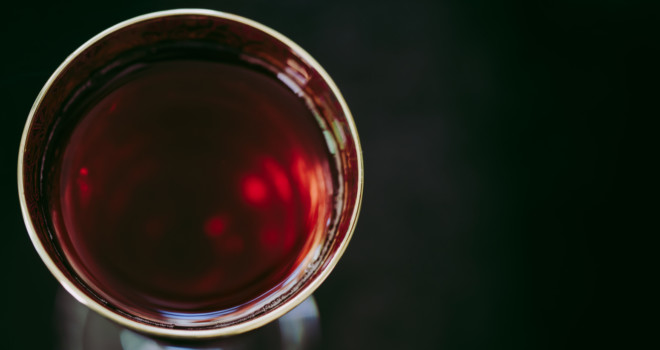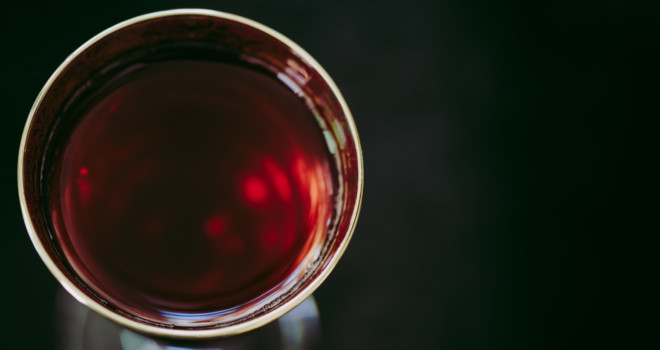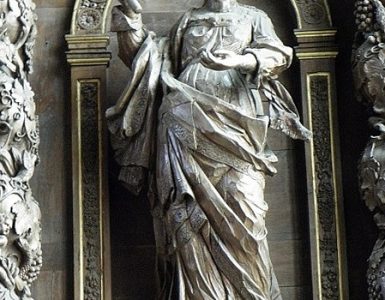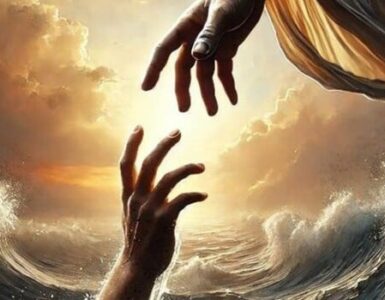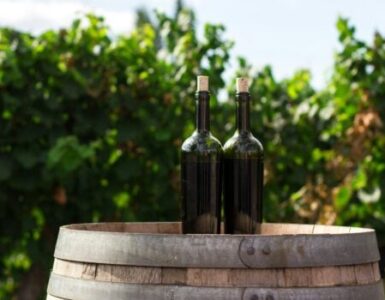I grew up in a house full of wine. As a cradle-Catholic, it was commonplace for wine to be served to adults on various occasions. Wine may have been served during a party or gathering. In my house, we passed around a blessing cup of wine to signify a special occasion such as a First Holy Communion, a Baptism Birthday, etc. Some of my non-Catholic friends were terrified at the site of wine in our refrigerator. So, what’s the deal with wine? Sacred Scripture is clear: God loves wine!
Throughout the Old Testament, wine is used as a powerful symbol. Wine represents wisdom (Proverbs 9:1-5; Sirach 17-21). Wine represents law and marriage feasts (Song of Solomon 1:2-4,4:10,5:1,7:2). The prophet Isaiah speaks to a gathering of all peoples for a “great feast of wine, when God will come to save them” (Isaiah 25:6-9). The prophet Amos foretells the days when God will restore the Davidic kingdom, as “new wine will drip from the mountains and flow from all the hills” (Amos 9:13).
Jesus uses wine throughout the Gospels of the New Testament. His first miracle is performed during the famous scene of the wedding feast at Cana. While Jesus and His Mother attend a wedding feast, the bridegroom begins to run out of wine to serve the guests. In today’s world, running out of refreshments at a party or gathering could be a minor frustration or inconvenience for the host and guests. Running out of wine at a wedding feast in the ancient Jewish tradition would have been a catastrophic social faux pas that would most certainly destroy a family’s social standing within the local community.
Mary takes notice of this unfolding calamity as she says to Jesus, “They have no wine (John 2:3).” This statement sets into motion the first public miracle of her Son. Mary sees the needs of the people, and she intercedes on their behalf. After a brief discussion with Our Lord, Mary then tells the servants to “do whatever he tells you (John 2:5).” This interaction between Mary and Jesus is very similar to the Catholic orientation of prayer, with regards to Marian prayer intercession. Just like the guests of the wedding feast, we approach Mary with our intercessory prayers. Mary, in turn, takes our prayers directly to God with hopes of abundant blessings. Our Lord Jesus Christ, who cannot be outdone in generosity (2 Corinthians 8:2), then blesses our lives with overflowing generosity.
After hearing the intercession from His Mother, Jesus looks with favor on her request. And when God wants to make some wine, he makes a lot of wine. The stone jars used for Jewish ritual would typically hold 20 to 30 gallons of water (John 2:6). In all, Jesus miraculously makes about 120 gallons of wine! We know that it was the best tasting, fermented wine, as:
“the master of the banquet tasted the water that had been turned into wine. He did not know where it was from, but the servants who had drawn the water knew. Then he called the bridegroom aside and said, ‘Everyone serves the fine wine first, and then the cheap wine after the guests are drunk. But you have saved the fine wine until now! (John 2:9-10)’”
Jesus created the finest, heavenly wine for the entire duration of the wedding feast.
This of course is not to suggest that the Bible condones drunkenness. On the contrary, the Scriptures are clear that excessive drinking should be avoided at all times. Upon making wine, Noah immediately gets drunk and experiences his own fall (parallel to Adam), perpetuating the cycle of human failures that persist through the Old Testament (see Genesis 9:21). In the New Testament, St. Paul warns of excessive drinking (see 1 Timothy 3:8; 1 Corinthians 5:11). It would be better to consume wine in moderation, and to “Be sober minded and be watchful (1 Peter 5:8).”
With anticipation to His death, wine proves to be a helpful symbol to direct our attention to Jesus’ crucifixion. Consider the typological comparison between the Passover Feast from Exodus, and the Lord’s Passion from the Gospels. Upon saving the Israelites from the fetters of slavery, Moses is instructed by God to celebrate a perpetual meal using specific instructions: God tells Moses to sacrifice a 1-year-old, pure and spotless lamb with no broken bones. God then tells Moses to collect the lamb’s blood in a bowl and brush the doorposts of the Israelites with the lamb’s blood using a hyssop branch (Exodus 12:21-23). This historic moment became enthroned in the Jewish tradition with the annual celebration of Passover. What is interesting to note is this ancient Seder meal was host to four cups of wine, which represent the redemption of the Israelites from slavery: (1) The Cup of Sanctification: I will bring you out; (2) The Cup of Deliverance: I will rescue you; (3) The Cup of Redemption: I will redeem you; (4) The Cup of Praise: I will take you as My people. A fifth cup was reserved for Elijah in hopes that he would visit during the celebration. This cup is left unconsumed.
Fast-forward to Our Lord Jesus Christ, who is declared by John the Baptist as “the Lamb of God (John 1:29).” Jesus, the new sacrificial Lamb, is celebrating the Passover meal with his disciples at the Last Supper:
“Then He took the cup, gave thanks, and gave it to them, saying, ‘Drink from it, all of you. This is My blood of the covenant, which is poured out for many for the forgiveness of sins. I tell you, I will not drink of this fruit of the vine from now on until that day when I drink it anew with you in My Father’s kingdom (Matthew 26:27-29).’”
Jesus declares that he will not drink the final cup of wine until His Father’s kingdom is complete.
The very next day, during His Passion, Jesus refrains from drinking any wine: “they offered Him wine to drink, mixed with gall; but after tasting it, He refused to drink it (Matthew 27:34).” Jesus is then raised onto the Cross, and offered wine:
“After this, knowing that everything had now been accomplished, and to fulfill the Scripture, Jesus said, ‘I thirst.’ A jar of sour wine was sitting there. So they soaked a sponge in the wine, put it on a stalk of hyssop, and lifted it to His mouth (John 19:28-29).”
After finally receiving the wine, on a hyssop branch, Jesus says “τετέλεσται” — it is finished. What was finished? The night before, Jesus omitted the fourth cup from the Passover meal, and transformed it into the New Covenant Passover meal: The Holy Eucharist. Our Saving Lord now consumes the final cup, which was reserved for Elijah. A compelling interpretation by Catholic biblical scholar Dr. Scott Hahn suggests that the new Passover ends when Jesus receives wine on the Cross. Christ receives the final, consummating cup of the New Covenant. This final cup is now available to all who call upon Him, in the Holy Eucharist.
God’s plan of salvation is presented through the physical consumption of bread, and the physical drinking of wine. May we forever “eat and drink, and find satisfaction in all our toil, for this is the gift of God (Ecclesiastes 3:13).”
✠


